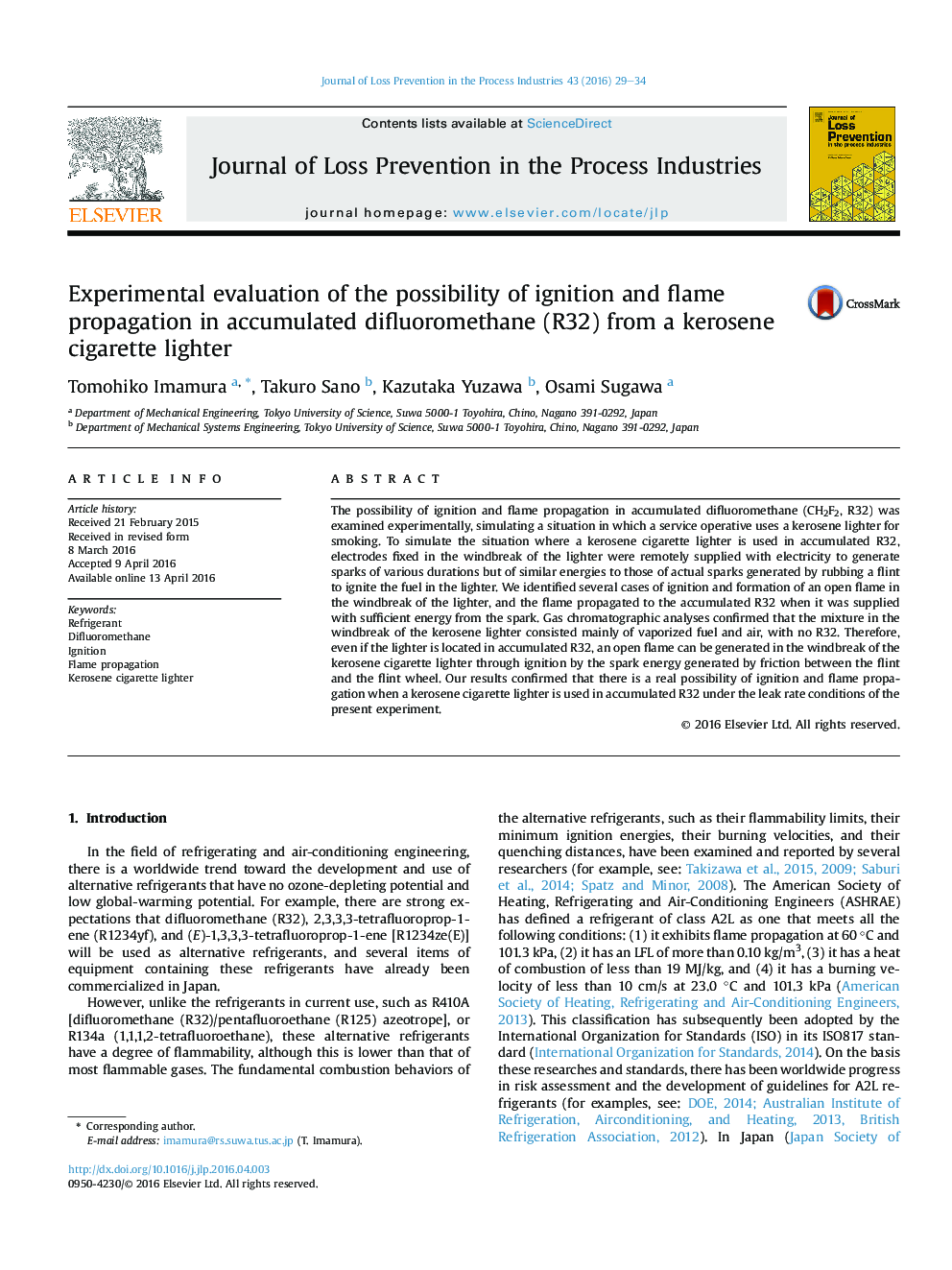| Article ID | Journal | Published Year | Pages | File Type |
|---|---|---|---|---|
| 585908 | Journal of Loss Prevention in the Process Industries | 2016 | 6 Pages |
•The possibility of ignition and flame propagation in accumulated difluoromethane (R32) from a kerosene cigarette lighter was examined.•An open flame formed at the lighter, although it was located in the accumulated R32; flame propagation to the R32 was also observed.•There is a possibility of ignition and flame propagation of R32 from a kerosene cigarette lighter.
The possibility of ignition and flame propagation in accumulated difluoromethane (CH2F2, R32) was examined experimentally, simulating a situation in which a service operative uses a kerosene lighter for smoking. To simulate the situation where a kerosene cigarette lighter is used in accumulated R32, electrodes fixed in the windbreak of the lighter were remotely supplied with electricity to generate sparks of various durations but of similar energies to those of actual sparks generated by rubbing a flint to ignite the fuel in the lighter. We identified several cases of ignition and formation of an open flame in the windbreak of the lighter, and the flame propagated to the accumulated R32 when it was supplied with sufficient energy from the spark. Gas chromatographic analyses confirmed that the mixture in the windbreak of the kerosene lighter consisted mainly of vaporized fuel and air, with no R32. Therefore, even if the lighter is located in accumulated R32, an open flame can be generated in the windbreak of the kerosene cigarette lighter through ignition by the spark energy generated by friction between the flint and the flint wheel. Our results confirmed that there is a real possibility of ignition and flame propagation when a kerosene cigarette lighter is used in accumulated R32 under the leak rate conditions of the present experiment.
